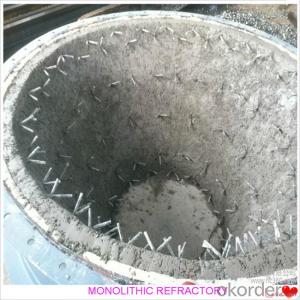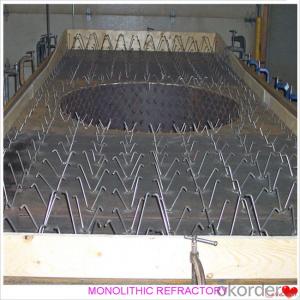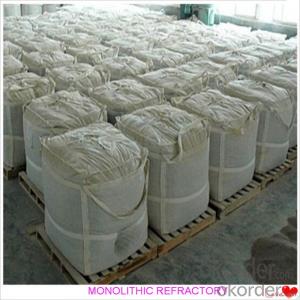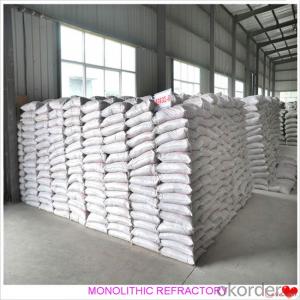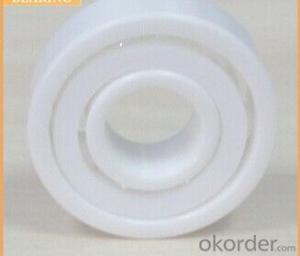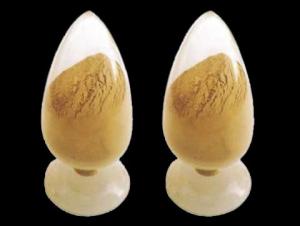Castable For Fireplace and Industrial Furnace Cement Industry
- Loading Port:
- China main port
- Payment Terms:
- TT OR LC
- Min Order Qty:
- 1000 kg
- Supply Capability:
- 3000000 kg/month
OKorder Service Pledge
OKorder Financial Service
You Might Also Like
Castable For Fireplace and Industrial Furnace Cement Industry
Product Description:
Gunning castable is manufactured according to international standards. The product is famous for its excellent abrasion resistance and low thermal conductivity. Further, these can be provided in different specifications as required by the clients. The gunning castables are used high purity raw materials and additives as the main material, and made of under superfine powder adding technology.
Product Advantages:
The material has excellent structural stability and air tightness, and has high physical and chemical properties, also has a fine working ability.They should be used with the same material products.
Product Applications:
For feature of gunning castable, they have excellent abrasion resistance, thermal shock resistance, high-temperature resistance, anti-corrode and have high intensity.
Designed for refractory lining of blast furnace iron and slag runners, skimmers and soon
They can be used in troughs of small and mid size BFs and in all positions of the troughs where fast tapping is required.
Product Specifications:
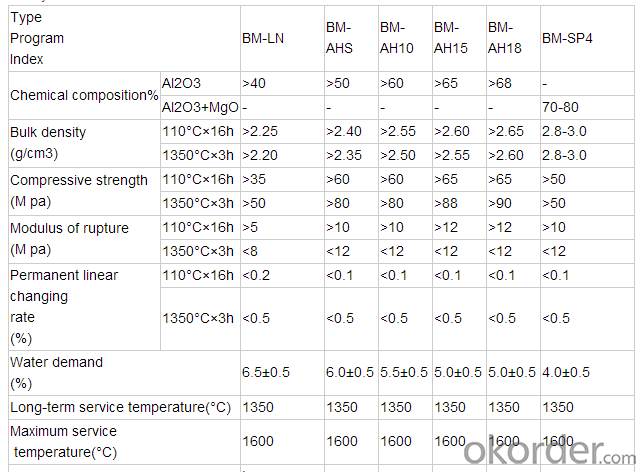
FAQ:
1. How you can control your quality?
For each production processing, we have complete QC system for the chemical composition
and Physical properties. After production, all the goods will be tested, and the quality certificate
will be shipped along with goods.
2. What's your delivery time?
It usually needs about 20days- 45 days after receiving the deposit.
3. Do you provide free samples?
Yes, we can provide a free sample for testing, If we have sample in stock,
The quantity based on the material type, The buyer should bear all the shipping costs.
4. What's your payment terms?
We can accept 30% deposit, 70% balance before shipment for ordrs over $ 2000.
5. Can we visit your Company?
Yes, certainly. You are very welcome to China and we will be honored to have a customer and friend.
Product Picture:
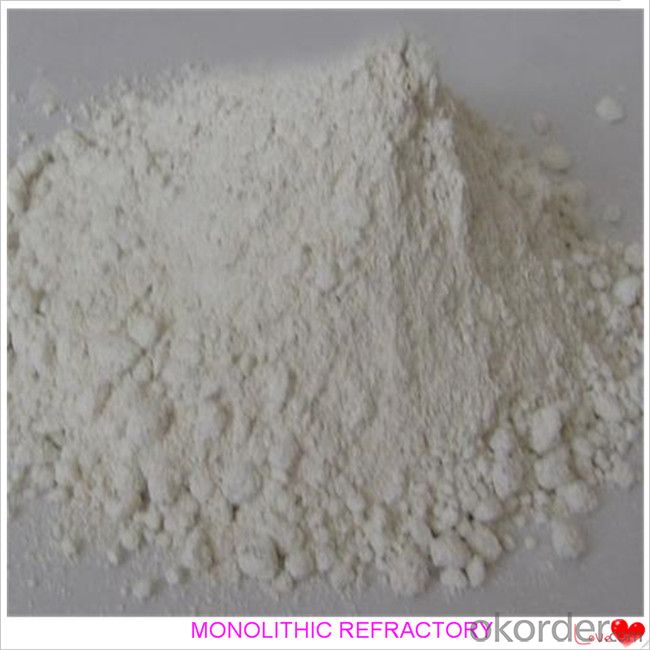
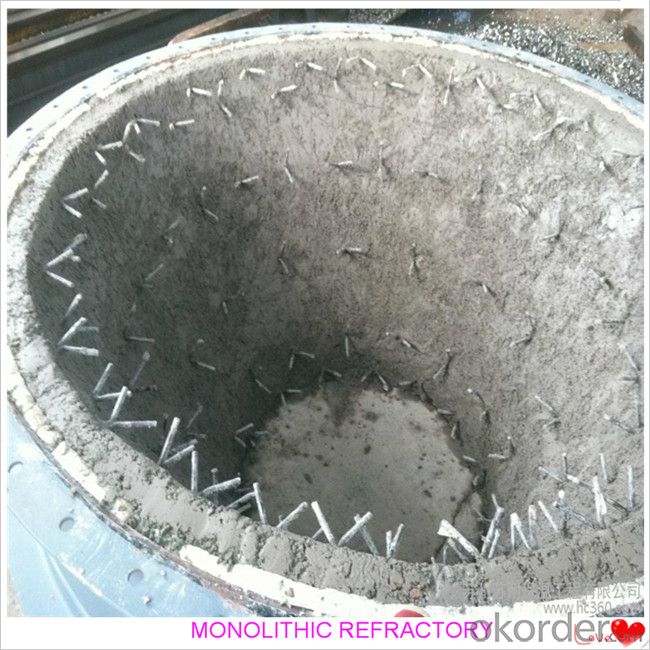
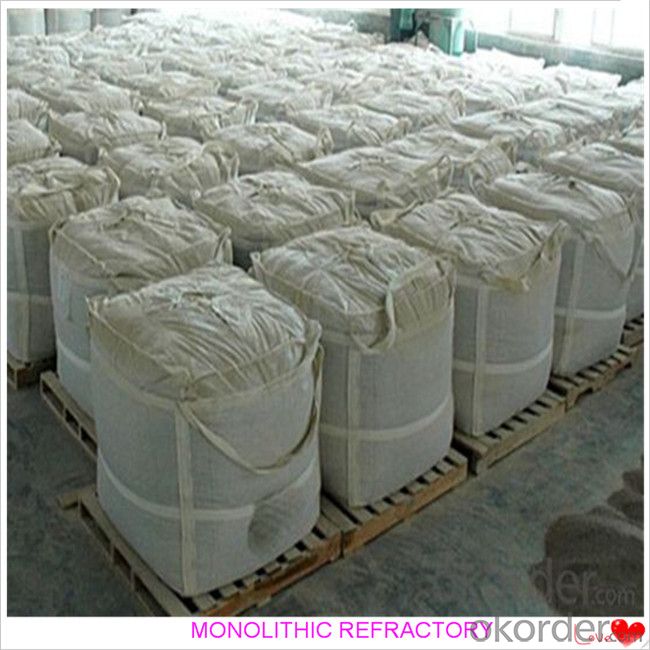
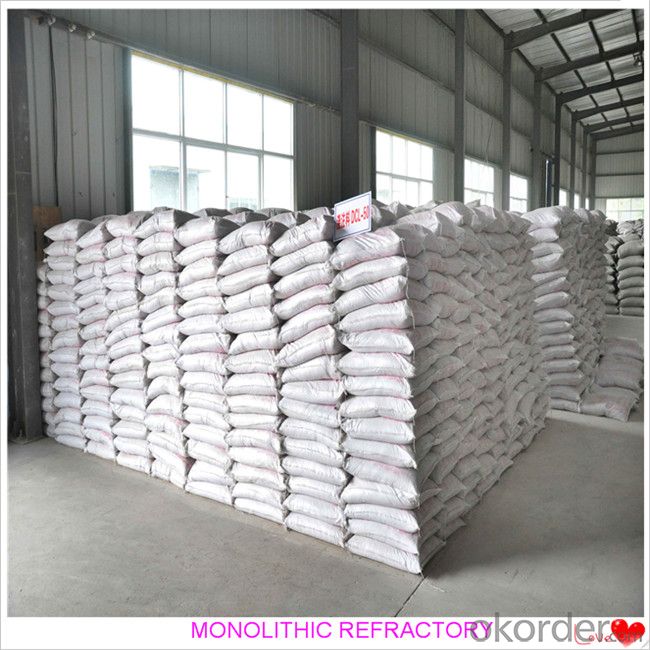
- Q:How do monolithic refractories mitigate heat loss in iron and steel operations?
- Monolithic refractories mitigate heat loss in iron and steel operations by creating a strong and continuous lining that insulates the furnace or kiln, reducing the transfer of heat to the surrounding environment. This lining is made of a single, seamless material, which eliminates joints or gaps that could allow heat to escape. Additionally, monolithic refractories have high thermal conductivity and low thermal expansion, allowing them to withstand extreme temperatures while minimizing heat loss.
- Q:What are the limitations of monolithic refractories in high-temperature applications?
- Monolithic refractories are renowned for their versatility and ease of installation, which has made them a popular choice in various high-temperature settings. However, it is important to take into account their specific limitations. To begin with, monolithic refractories have a restricted ability to withstand thermal shock. Significant temperature changes, such as those encountered during start-up or shutdown procedures, can subject them to thermal stress, resulting in cracking or spalling. This can be a significant issue in scenarios where the refractory is exposed to frequent temperature fluctuations. Moreover, monolithic refractories possess comparatively lower mechanical strength in comparison to traditional brick or block refractories. This can lead to a diminished ability to withstand mechanical stress, including abrasion or impact, particularly in high-temperature environments. Consequently, they may not be suitable for applications that involve high mechanical loading or abrasive conditions. Another drawback of monolithic refractories is their vulnerability to chemical attack. Certain aggressive chemical environments can trigger chemical reactions with the refractory material, leading to deterioration or corrosion. This becomes a concern in applications that involve acidic or alkaline substances, where specialized refractory materials may be necessary. Additionally, monolithic refractories are more susceptible to spalling or erosion caused by thermal cycling. The repetitive expansion and contraction of the refractory material due to temperature changes can result in the formation of cracks or gaps, making them more prone to erosion from gases or liquids. This limitation must be carefully considered in applications where long-term durability is crucial. Lastly, repairing or replacing monolithic refractories can be challenging compared to brick or block refractories. Once installed, removing and replacing a monolithic lining can prove difficult, especially in complex shapes or confined spaces. This limitation can lead to prolonged downtime or increased maintenance and repair costs. In conclusion, while monolithic refractories offer numerous advantages in high-temperature applications, they also come with limitations in terms of thermal shock resistance, mechanical strength, chemical resistance, erosion, and repairability. It is crucial to thoroughly assess these limitations to ensure the suitability of monolithic refractories for specific application requirements.
- Q:How do monolithic refractories withstand the corrosive environments in steelmaking processes?
- Monolithic refractories withstand corrosive environments in steelmaking processes due to their high chemical resistance and thermal stability. These refractories are made from a single, continuous material, eliminating joints and weak points that can be susceptible to corrosion. They are composed of materials such as high-alumina, silica, or magnesia, which possess excellent resistance to chemical attacks from molten metals, slags, and gases present in steelmaking. Additionally, monolithic refractories can be designed with specific additives and binders to further enhance their resistance to corrosion, ensuring their durability and prolonged service life in the harsh conditions of steelmaking processes.
- Q:How are monolithic refractories installed in iron and steel production processes?
- The installation of monolithic refractories in iron and steel production processes necessitates various methods depending on the specific application and requirements. The installation process typically encompasses the subsequent steps: 1. Surface Preparation: Prior to installing monolithic refractories, it is imperative to adequately prepare the surface where they will be applied. This involves cleansing and eliminating any loose materials, dust, or contaminants from the substrate. 2. Mixing: Monolithic refractories comprise diverse materials, including aggregates, binders, and additives. These constituents are blended in specific proportions to attain the desired properties and consistency. The mixing process can be executed manually or using mechanical mixers. 3. Application: Various techniques exist for applying monolithic refractories, such as gunning, casting, ramming, and troweling. The chosen method is contingent upon factors such as the structure's shape, accessibility, and required thickness. - Gunning: This technique entails utilizing a gunning machine to spray the refractory material onto the surface. It is frequently employed for repairing or patching existing linings or for swift installation in hard-to-reach areas. - Casting: In casting, the refractory material is poured into molds or forms and allowed to solidify and harden. This method is suitable for fabricating intricate shapes and large-sized components. - Ramming: Ramming involves manually or mechanically compacting the refractory material into a mold or form using a ramming tool. This approach is commonly employed for lining induction furnaces, ladles, and other equipment. - Troweling: Troweling is a manual method wherein the refractory material is applied and smoothed using a trowel. It is frequently utilized for minor repairs or touch-ups. 4. Curing: Subsequent to the application of the refractory material, curing is necessary to attain its optimal strength and performance. Curing involves allowing the material to dry and harden at a controlled temperature and humidity for a specified duration. This step is crucial to ensure the monolithic refractory lining's long-term durability and resistance. In conclusion, the installation of monolithic refractories in iron and steel production processes necessitates meticulous preparation, proper mixing, and the appropriate application technique. It is imperative to adhere to manufacturer guidelines and industry best practices to ensure a successful installation that fulfills the specific requirements of the production process.
- Q:What are the advantages of using low-moisture castables in the iron and steel industry?
- Low-moisture castables offer numerous benefits to the iron and steel industry. Firstly, their lower water content results in shorter drying times, which is crucial in this fast-paced industry. This reduction in overall production time allows for quicker turnaround and increased efficiency. Secondly, low-moisture castables exhibit superior strength and durability when compared to traditional castables. They can withstand extreme temperatures and harsh environments without cracking or breaking. This resilience is essential in an industry marked by high heat and abrasion, ensuring that the castables maintain their structural integrity and endure demanding conditions. Additionally, low-moisture castables boast excellent thermal shock resistance. This means they can handle rapid temperature changes without experiencing cracks or spalling. In an industry that frequently relies on heating and cooling processes, this attribute is highly advantageous. Moreover, low-moisture castables possess a higher density than traditional castables, resulting in improved insulation properties and lower thermal conductivity. This insulation efficiency conserves energy and minimizes heat loss during various processes, ultimately leading to significant cost savings. Lastly, low-moisture castables offer versatility in their application. They can be utilized for various purposes in the iron and steel industry, serving as linings for ladles, furnaces, tundishes, and other high-temperature equipment. This versatility allows for greater flexibility in designing and constructing the necessary infrastructure for iron and steel production. In conclusion, the utilization of low-moisture castables in the iron and steel industry provides a range of advantages, including reduced drying time, increased strength and durability, enhanced thermal shock resistance, improved insulation properties, and versatile application possibilities. These benefits contribute to more efficient and cost-effective operations in this industry.
- Q:What are the common applications of monolithic refractories in blast furnaces?
- Monolithic refractories are commonly used in blast furnaces for various applications such as lining and repairing the hearth, taphole, and slag line, as well as for hot repairs and maintenance. These refractories provide high-temperature resistance, erosion and corrosion resistance, and thermal shock resistance, thereby ensuring the efficient and reliable operation of blast furnaces in the iron and steel industry.
- Q:How do monolithic refractories contribute to the safety of iron and steel operations?
- Monolithic refractories play a crucial role in enhancing the safety of iron and steel operations. These refractories are made of a single, continuous material, which offers several benefits that contribute to the overall safety of the operations. Firstly, monolithic refractories provide excellent thermal insulation. They are designed to withstand high temperatures, preventing heat transfer to the surrounding environment. This insulation property helps in maintaining a safe working temperature for the operators, reducing the risk of burns or other heat-related injuries. Furthermore, monolithic refractories have high resistance to chemical attack. In iron and steel operations, various chemicals and molten metals are used, which can be corrosive and hazardous. The use of monolithic refractories as lining materials creates a protective barrier that resists the corrosive effects of these substances, preventing leaks and potential accidents. Another safety benefit is the ability of monolithic refractories to withstand mechanical stress. Steelmaking processes involve heavy machinery and equipment, which can exert significant pressure on the refractory linings. Monolithic refractories have excellent mechanical strength, which enables them to withstand these stresses and maintain their integrity. This prevents the risk of sudden failure or collapse, reducing the possibility of accidents and injuries due to falling debris. Additionally, monolithic refractories offer easy installation and repair. They can be applied as a castable or gunning material, allowing for quick and efficient lining of furnaces, ladles, and other equipment. This ease of installation reduces downtime during maintenance or repairs, minimizing the risk of accidents caused by delayed or prolonged shutdowns. In summary, monolithic refractories contribute to the safety of iron and steel operations through their excellent thermal insulation, resistance to chemical attack, ability to withstand mechanical stress, and ease of installation and repair. By providing a protective barrier, these refractories help in preventing injuries, maintaining a safe working environment, and minimizing the potential hazards associated with high temperatures, corrosive substances, and mechanical failures.
- Q:What are the common testing methods used to evaluate the performance of monolithic refractories?
- There are several common testing methods used to evaluate the performance of monolithic refractories. These methods help to determine the suitability and durability of refractory materials in various applications. Some of the most commonly used testing methods include: 1. Thermal Conductivity Testing: This method measures the ability of a refractory material to conduct heat. It helps in determining the insulation properties of the material and its ability to withstand thermal shocks. 2. Compression Testing: This test measures the compressive strength of the refractory material. It helps in understanding how well the material can withstand external forces and pressure without breaking or deforming. 3. Abrasion Testing: This method evaluates the resistance of the refractory material to wear and tear caused by abrasive forces. It helps in assessing the material's ability to withstand erosive conditions and long-term exposure to harsh environments. 4. Creep Testing: This testing method measures the deformation or sagging of the refractory material under high temperatures and constant loading. It helps in understanding the material's resistance to deformation and its ability to maintain its shape over time. 5. Thermal Expansion Testing: This test determines the expansion and contraction characteristics of the refractory material when exposed to different temperatures. It helps in assessing the material's ability to withstand thermal cycling without cracking or breaking. 6. Chemical Resistance Testing: This method evaluates the resistance of the refractory material to chemical attacks, such as corrosion or erosion caused by chemical reactions. It helps in determining the material's suitability for specific applications where it may come into contact with corrosive substances. 7. Refractoriness Under Load (RUL) Testing: This test measures the ability of the refractory material to withstand high temperatures and maintain its structural integrity. It helps in understanding the material's resistance to thermal stresses and its suitability for high-temperature applications. These testing methods provide valuable data to assess the performance of monolithic refractories and ensure their suitability for specific industrial applications. By evaluating these properties, manufacturers and users can make informed decisions regarding the selection and use of refractory materials.
- Q:How are monolithic refractories installed and repaired in iron and steel applications?
- To ensure optimal performance and longevity in iron and steel applications, specific procedures are employed for the installation and repair of monolithic refractories. The installation process typically involves the following steps: 1. Proper surface preparation is crucial. This entails removing loose material, dirt, and dust to create a smooth and clean substrate that facilitates good adherence of the refractory material. 2. The refractory material, supplied as dry powders or granules, is mixed with water or a specific bonding agent according to the manufacturer's instructions to achieve the desired properties. 3. The mixed refractory material is then applied to the prepared surface using techniques such as troweling, spraying, or casting, depending on the installation requirements and the type of monolithic refractory. 4. Curing is necessary to maximize the strength and durability of the refractory material. The curing process can involve air drying, heat treatment, or a combination of both, in accordance with the specific refractory material's recommendations. When it comes to repairing monolithic refractories in iron and steel applications, the following steps are generally followed: 1. Thorough assessment of the damaged area or component is conducted to determine the extent of the damage and the appropriate repair method. 2. The damaged monolithic refractory material is carefully removed using suitable tools and techniques while ensuring the underlying substrate remains intact. 3. Similar to the installation process, the surface where the repair will take place is cleaned and prepared by removing any loose material, dirt, and dust. 4. The repair material, typically the same or similar to the original monolithic refractory, is mixed and applied to the damaged area. The application method may vary depending on the nature of the repair and the specific requirements of the refractory material. 5. The repaired area is properly cured and inspected to ensure the quality and effectiveness of the repair, following the manufacturer's guidelines for curing and post-repair inspection procedures. In conclusion, the meticulous execution of surface preparation, proper mixing and application of refractory material, and appropriate curing procedures are essential for the installation and repair of monolithic refractories in iron and steel applications. These steps guarantee reliable and durable refractory linings, which are vital for the efficient operation of iron and steel processes.
- Q:How do monolithic refractories withstand the mechanical impacts in furnace door applications?
- Monolithic refractories have been specially designed to endure the mechanical impacts experienced in furnace door applications as a result of their unique properties and composition. These refractories are manufactured from a solitary piece of material, which eliminates the necessity for joints or seams that are susceptible to cracking or failure under mechanical stress. An essential characteristic of monolithic refractories is their elevated density, which grants them exceptional strength and resistance against mechanical impacts. Their compact structure makes them less prone to cracking or fracturing when exposed to sudden or repeated impacts, such as the opening or closing of a furnace door. Along with their density, monolithic refractories also possess substantial tensile strength and toughness. These qualities enable them to absorb and disperse the energy from mechanical impacts, reducing the likelihood of damage or failure. This is particularly crucial in furnace door applications, where the refractories are constantly subjected to the stress of door movement. Moreover, monolithic refractories frequently incorporate additives or bonding agents that enhance their mechanical properties. These additives may consist of fibers or aggregates that fortify the structure and improve impact resistance. They can also enhance the refractory's ability to endure thermal cycling, which is common in furnace door applications. Overall, monolithic refractories are meticulously engineered to withstand the mechanical impacts encountered in furnace door applications. Their dense composition with high strength, combined with the utilization of additives and bonding agents, guarantees their durability and longevity in these demanding environments.
1. Manufacturer Overview |
|
|---|---|
| Location | |
| Year Established | |
| Annual Output Value | |
| Main Markets | |
| Company Certifications | |
2. Manufacturer Certificates |
|
|---|---|
| a) Certification Name | |
| Range | |
| Reference | |
| Validity Period | |
3. Manufacturer Capability |
|
|---|---|
| a)Trade Capacity | |
| Nearest Port | |
| Export Percentage | |
| No.of Employees in Trade Department | |
| Language Spoken: | |
| b)Factory Information | |
| Factory Size: | |
| No. of Production Lines | |
| Contract Manufacturing | |
| Product Price Range | |
Send your message to us
Castable For Fireplace and Industrial Furnace Cement Industry
- Loading Port:
- China main port
- Payment Terms:
- TT OR LC
- Min Order Qty:
- 1000 kg
- Supply Capability:
- 3000000 kg/month
OKorder Service Pledge
OKorder Financial Service
Similar products
New products
Hot products
Related keywords
